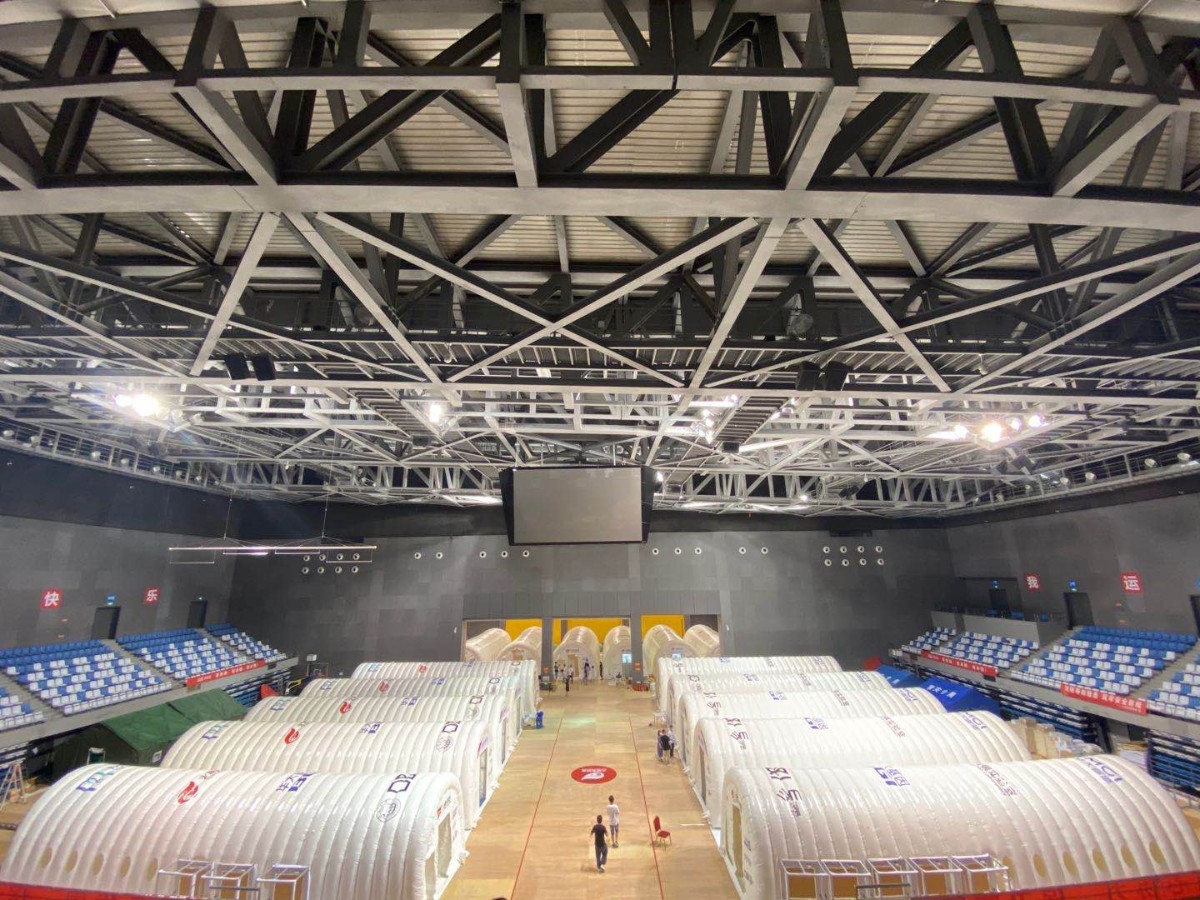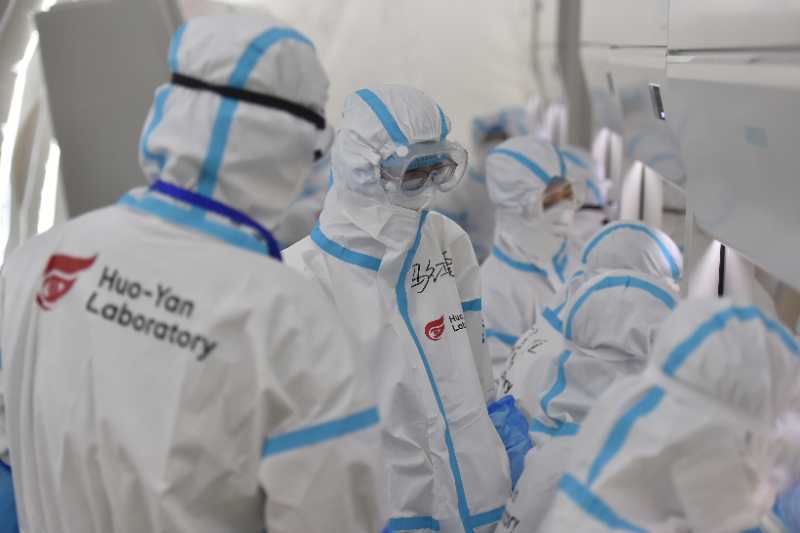Beijing's first inflatable COVID-19 testing lab, inside a sports center in Daxing district, is expanding its original nine air-inflated film chambers to sixteen. Once completed, the average daily test capacity of COVID-19 samples will be increased to 100,000, which will effectively alleviate the pressure of conducting nucleic acid tests in Beijing.

The inflatable COVID-19 testing lab is inside a sports center in Daxing district, Beijing, capital of China (Photo: Beijing Daily)
During the new construction, the function of the original nine chambers will not be affected, and still operate normally 24 hours a day. Currently, nearly 100 personnel work in three shifts, and can cope with 30,000 nucleic acid tests per day.
Named "Fire Eye", the laboratory uses top technology to identify viruses. On Thursday afternoon, the arched air-inflated chambers covering an area of more than 70 square meters had been set up. Sixteen of the chambers will work as the areas receiving and preparing samples, extracting nucleic acid from them and testing the nucleic acid.

The inside of the laboratory can be seen through the glass window. (Photo: Beijing Daily)
The lab is designed in strict accordance with the standards of a second-level biosafety laboratory. Through the innovative design of the fresh air system and the high-efficiency filtration system, the inlet and outlet air of each functional area is filtered and controlled.
The robotic arms of the automated testing machines can extract nucleic acid, and automatically extract the test tubes on a tray in batches. Each machine can extract 96 samples at a time, which greatly improves the efficiency compared with manual operation, according to Liu Xin, a representative of Chinese biotech company BGI Genomics.
Compared with traditional laboratories, the construction efficiency of this inflatable testing lab is very high. It takes only 50 minutes to fill a chamber, and the interior uses a modular design that can be upgraded according to the latest situation of the epidemic, Liu added.

The indoor technical personnel are strictly required to wear protective clothing, while those outside the labs don't need to. (Photo: Beijing Daily)
The "Fire Eye" testing laboratory played an important role in the prevention and control of the outbreak of COVID-19 in Wuhan, Central China's Hubei Province. But at that time, the laboratory was built using traditional technology. Later, an advanced air-inflated laboratory was put into use in Harbin, Heilongjiang Province in Northeast China, which helped control the local outbreak.
(Compiled by Yang Shiqi)


